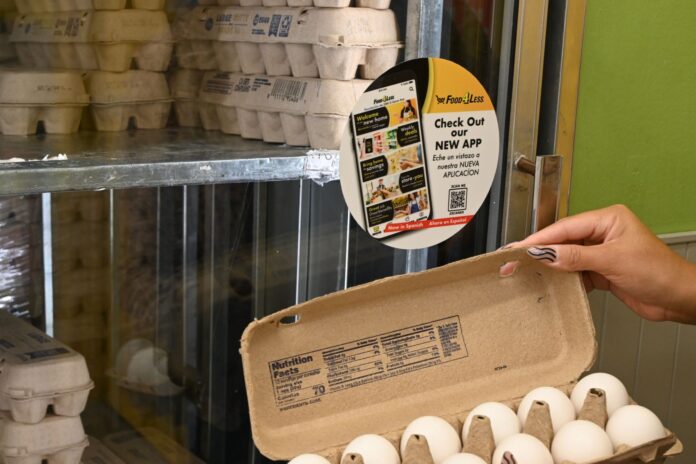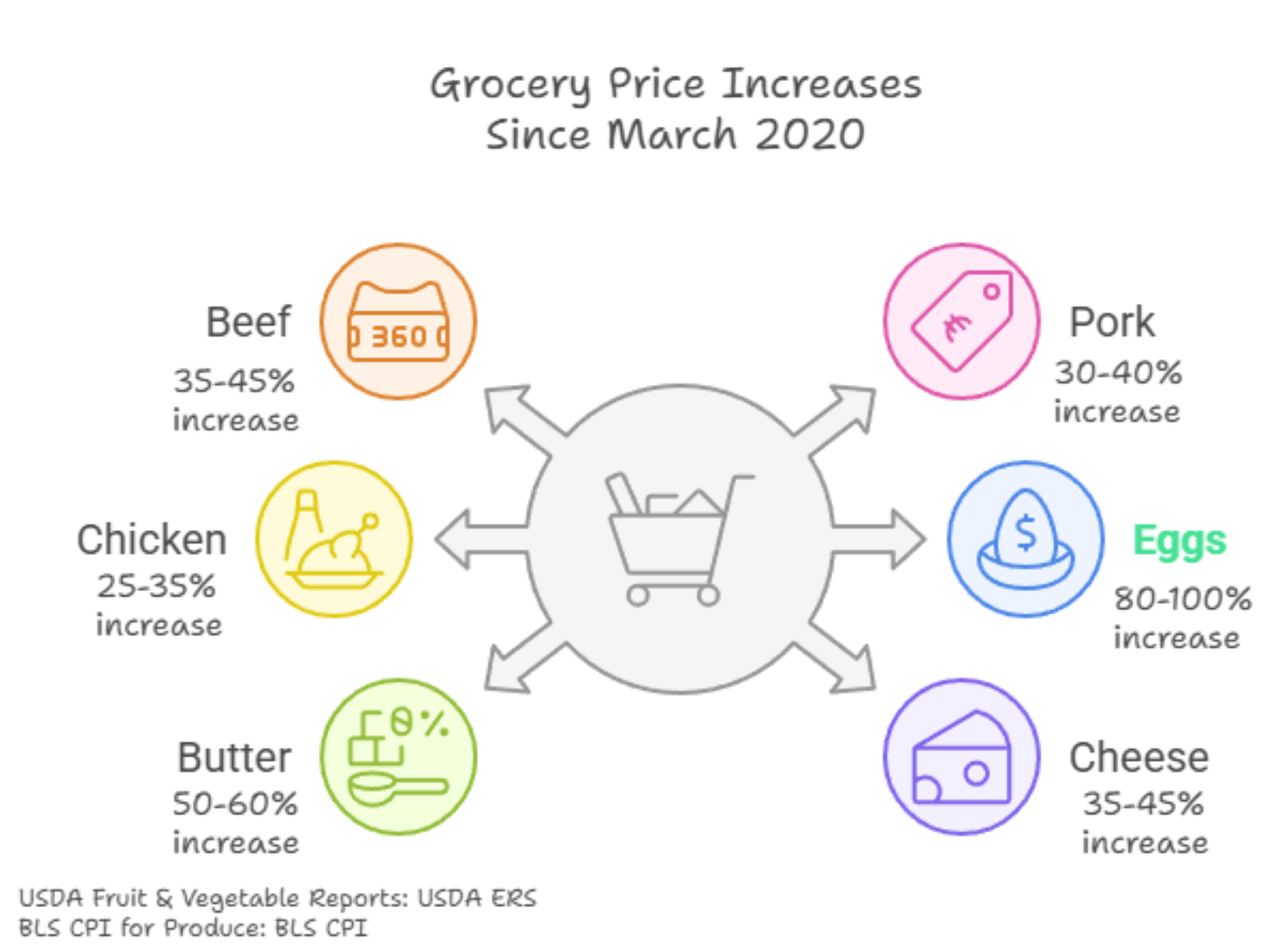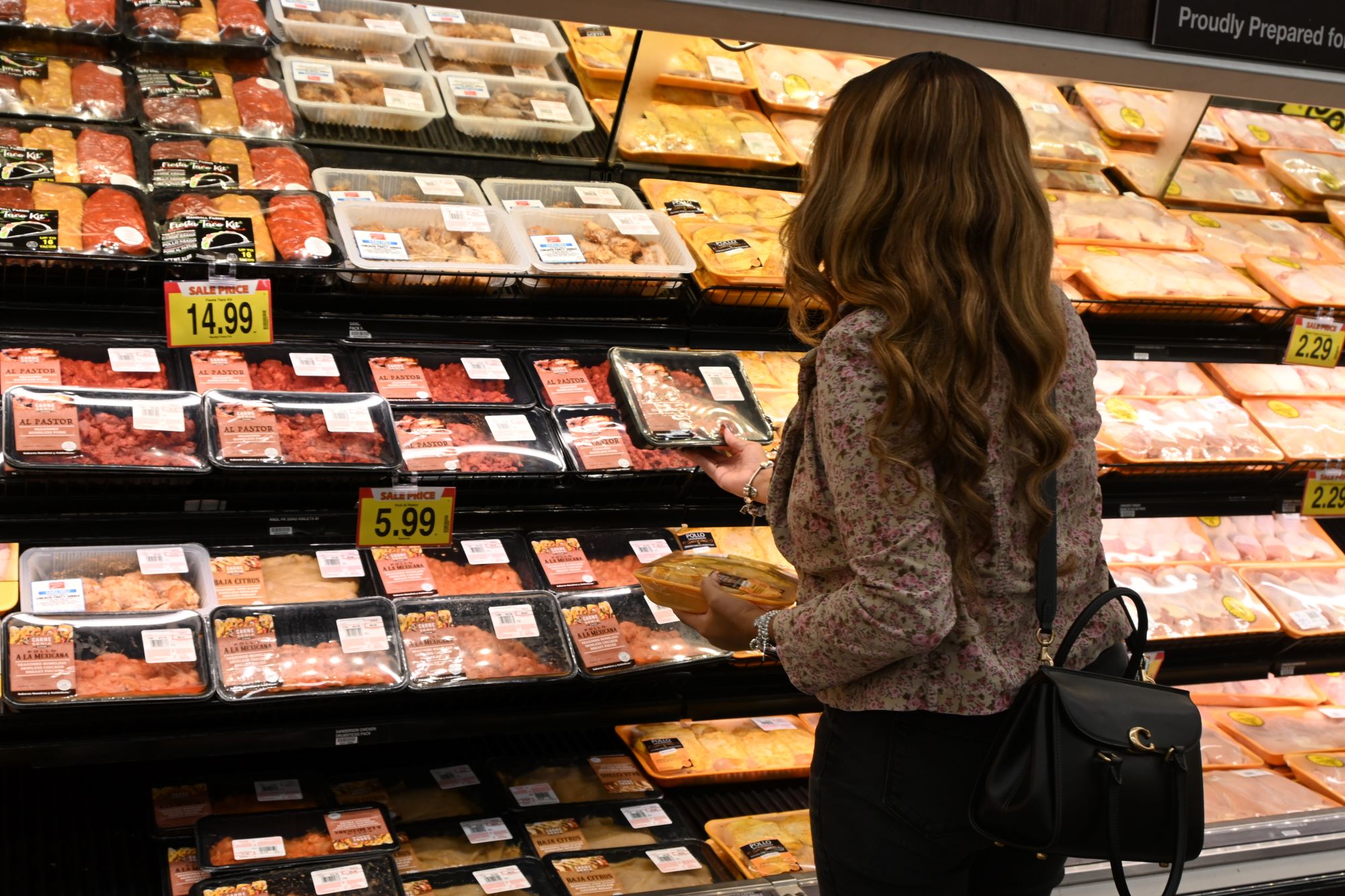
By Macy Meinhardt, V&V Staff, CA Local News Fellow
Soaring grocery store prices are a pain point in the wallets for many San Diegans, including seniors and low-income families. And now, in the digital era, food coupons gatekept behind smartphone apps add another hurdle for folks needing discounts the most.
Today, many of the region’s most popular chain stores, Food 4 Less, Vons, Ralphs, Albertsons, and Smart & Final, primarily rely on their websites and digital apps to provide consumers with discounts.
Take a browse on Food 4 Less’ digital coupons page, for example, which is filled with discounts on essential consumer items–toilet paper, laundry detergent, feminine hygiene products, chicken, frozen meals, produce, and more.

These discounts, however, are only available to those who know how to work a smartphone app. Residents argue this disadvantages those in the “digital divide,” people with limited access to or confidence in using computers and the internet.
“Accessing every potential discount is not just something that would be nice, but it is critical to ensuring that seniors have enough dollars to keep from falling over the edge and possibly ending up on the street,” said Paul Downey, CEO of Serving Seniors San Diego.
In San Diego, 53,000 residents–primarily seniors and low-income families- lack smartphone access, locking them out of digital-only grocery savings at checkout.
“The apps are confusing. I’m trying to learn how to use them when I go shopping, but boy, was I angry when I realized I hadn’t used it correctly. I ended up paying nearly $14 for four super oranges,” said resident Julie Porter during the March 24 City Council meeting.
As a result, San Diego City Councilmembers Sean Elo Rivera and Marni Von-Wilpert have pioneered an effort to make grocery store coupons more accessible for all shoppers, not just the ones who know how to work a smartphone.
The Grocery Pricing Transparency Ordinance, passed unanimously by the council on March 24, requires stores to provide paper coupons matching all digital discounts.
“This is about fairness. No one should pay more because they don’t own a smartphone,” said District 9 councilmember Elo-Riveria.
Grocery pricing surge

The ordinance comes in conjunction with skyrocketing grocery store prices which have outpaced the rise in inflation. Based on a 2023 analysis by TraceOne, since the onset of the COVID-19 pandemic, food prices have surged at their fastest rate since the 1970s, adding considerable strain to household budgets.
According to the Consumer Price Index, since the pandemic, at-home food prices have risen by 25% in the last four years, with some items like eggs rising by 80-100%.
Supply chain disruptions, rising labor and transportation costs, and inflation have driven the surge. Weather events induced by climate change, as well as diseases like Avian Flu, have further disrupted the food supply.
Another factor contributing to price hikes is the Russia-Ukraine war, which compounded other economy-wide inflationary pressures such as high energy costs.
“Money-saving measures shouldn’t exclude people with limited English, limited internet access, or those who don’t feel comfortable using smartphone applications,” said Thelma Navarro, a researcher and policy advocate with Center Policy Initiatives.
How the ordinance will work is that if a grocery store offers a digital discount, they must also provide an identical physical/paper coupon. In addition, stores must display a conspicuous sign stating: “Fair pricing for all of your rights to people discount under San Diego law, all digital discounts must also be made available as physical.”
Violations of this ordinance may be pursued as an act of unfair competition and subject to remedies and civil penalties outlined in the California Business and Professions Code.
An exception to the ordinance includes retail grocery stores that operate exclusively online and do not have a physical store in the city.

However, not everyone in attendance during the Tuesday council meeting was in outright support. Justine Maria, Executive Director of Public Affairs for the San Diego Regional Chamber of Commerce, stated that grocers have not been adequately included in these conversations.
“We have concerns over the process and lack of stakeholder outreach… when affected businesses are not included in these important conversations, well-meaning policies have the potential to have unforeseen negative effects for the local economy,” said Justine Maria, Executive Director of Public Affairs for the San Diego Regional Chamber of Commerce.
Tim James, a representative from the California Grocers Association, requested more time to work with city staff and leaders before the ban was put into place, warning that the ordinance puts grocers at risk from being able to offer discounts or coupons at all.
“The result, without that time, could be a significant and severe loss of all coupons and discounts for the City of San Diego,” said James.
The ordinance passed unanimously with an amendment to delay implementation for 90 days to give grocers more time to adapt.
“By passing this ordinance, we will be making it easier and more affordable for San Diegans,” said Councilmember Elo-Rivera.


